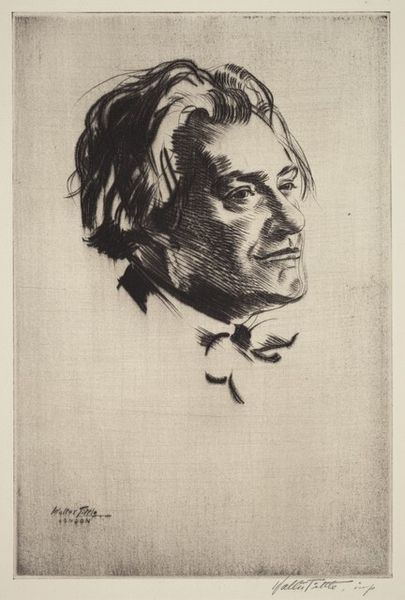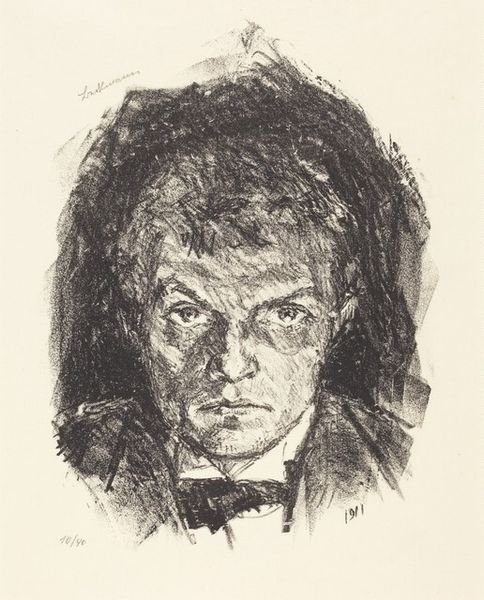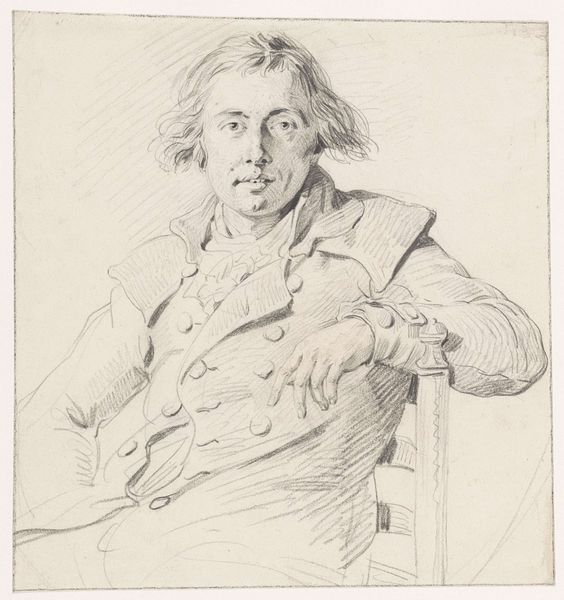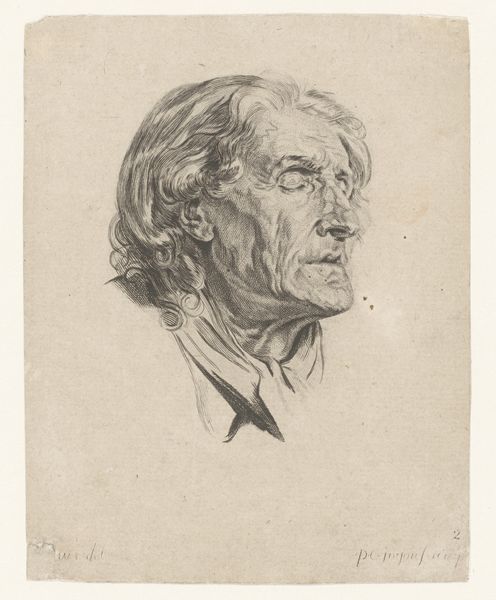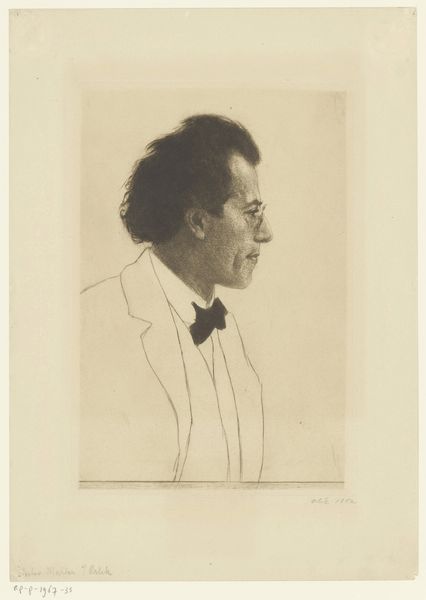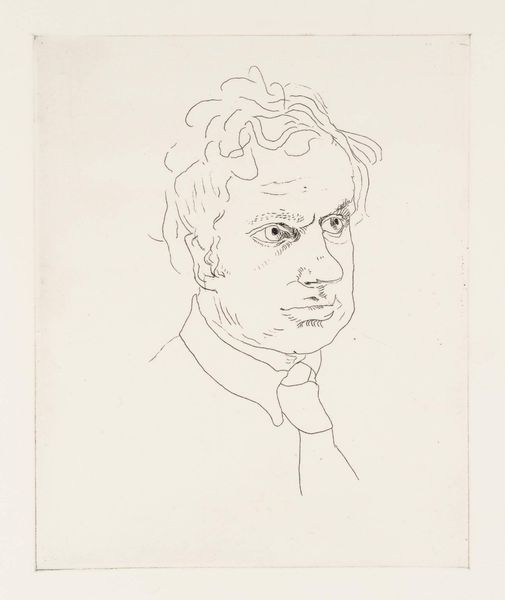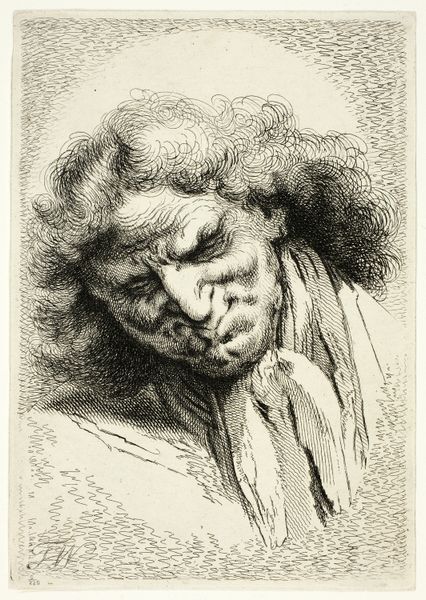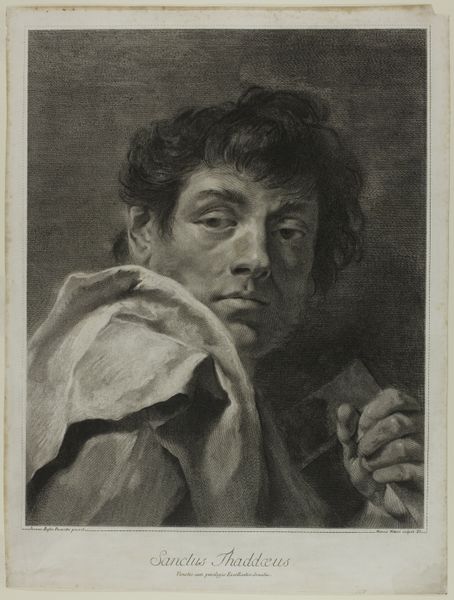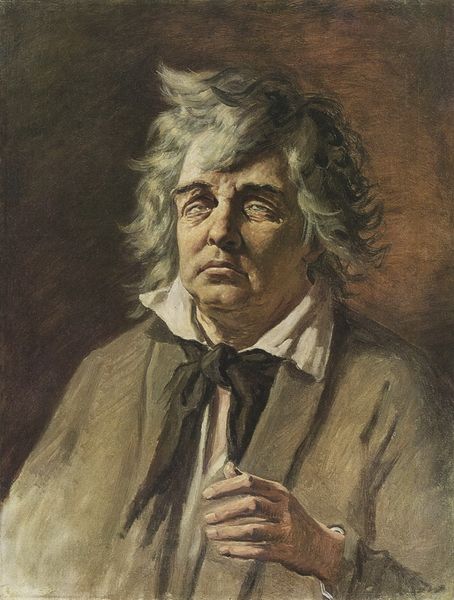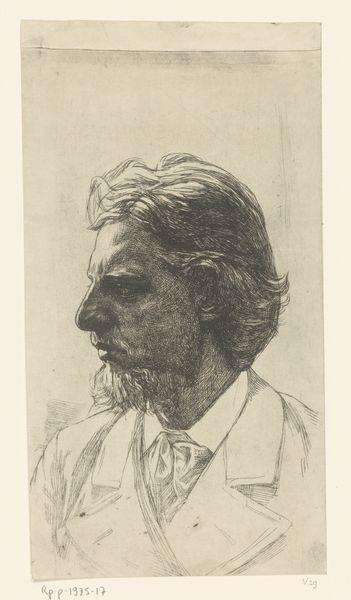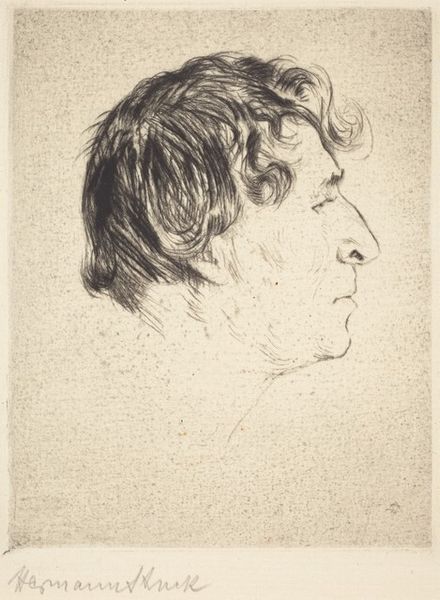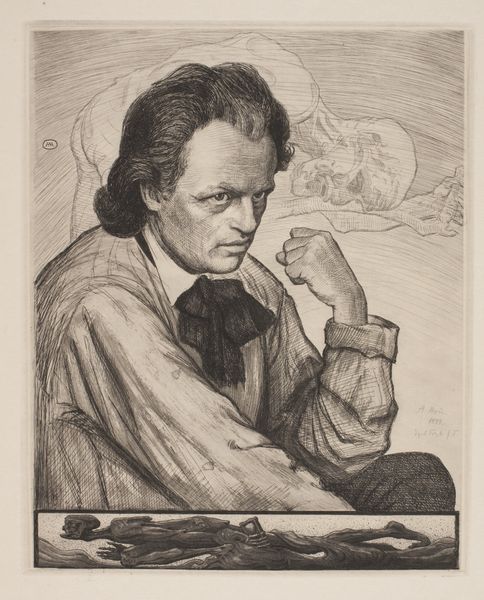
print, etching
#
portrait
# print
#
etching
#
intimism
#
realism
Dimensions: plate: 22.86 × 22.86 cm (9 × 9 in.)
Copyright: National Gallery of Art: CC0 1.0
Curator: Walter Tittle's "James McBey," crafted in 1929 using the etching technique, immediately strikes one as intensely personal, almost private. Editor: There's a stark immediacy to it, despite the rather muted tones. The sharp lines used to render the sitter's jacket almost give it a brittle texture, while his face emerges from the shadows, slightly weary but decidedly present. Curator: Tittle seems to have carefully placed McBey in an attitude of intellectual repose. Notice how the dark bow tie draws the eye to his shadowed face, creating a connection between his attire and his expressive countenance. Editor: It's all about contrasts, isn’t it? The softness of the facial features versus the angles forming the clothing, the light catching the hair and reflecting off the cheekbones, pitted against the darker lines etching into the plate itself. It makes him feel very present in a physical sense. Curator: In capturing James McBey, Tittle invokes an interesting power dynamic through portraiture. The symbolism lies not only in depicting the sitter, but in portraying McBey's perceived persona – the essence of his intellectual identity through his facial structure, which seems quite knowing. The portrait plays with symbols of authority and intellect within artistic circles. Editor: It’s interesting you say that. For me, it's more a study in textural juxtaposition and compositional balance. How Tittle uses light and shadow across the plate, creating this tension between detail and the almost vague, ghost-like quality in certain areas of the background. Curator: And the etching itself functions as a conduit to preserving memory and transmitting it across generations. What better means to create an icon? Editor: In any case, its powerful geometry makes it impossible to look away. It presents the essence of someone. It forces you to engage. Curator: I think that's right: whether it is the etching's semiotic structure or McBey's identity at stake, Tittle certainly achieves that, doesn’t he?
Comments
No comments
Be the first to comment and join the conversation on the ultimate creative platform.
